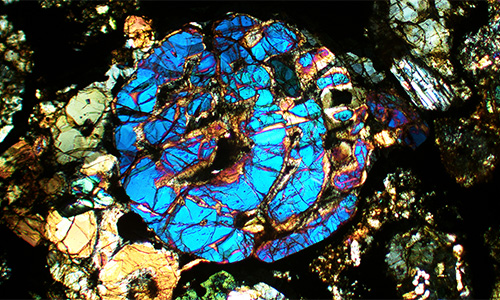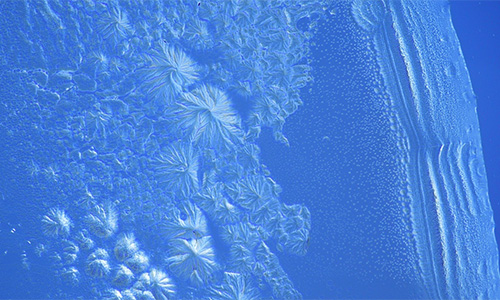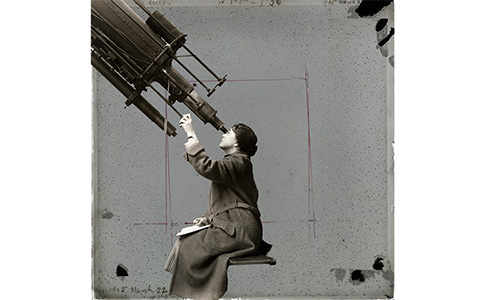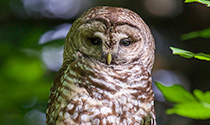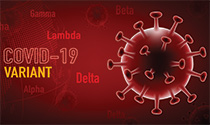|
|
|
|
|
|
| |
Art and science share a crucial element: creativity. Both require us to observe the universe from a new perspective and to communicate that vision to others. In February UChicago opened its inaugural “Science as Art” contest to submissions, calling for original images reflecting research affiliated with the University. More than 100 entries were collected. |
|
| |
|
|
|
|
|
|
|
|
|
| |
Winner: “Chondrules in Meteorites #5,” by Nicole Xike Nie, PhD’19. This microscope photograph shows a thin section of a meteorite, and the blue area in the center is what’s called a chondrule. It formed in space when a molten, millimeter-sized silicate droplet crystallized. Chondrules are among the oldest known materials in our solar system. |
|
| |
|
|
|
|
|
|
|
| |
Honorable mention: “The Edge of Awareness.” Kaylie Scorza (Class of 2023) wrote: “This image depicts crystals obtained by drying liquid growth medium for human gut bacteria (BHI broth), taken with a light microscope at 100x magnification. Polarizing filters were added to the microscope and adjusted to obtain the blue and white colors that give this image an otherworldly, harmonic quality.” |
|
| |
|
|
|
|
|
|
|
| |
Honorable mention: “A Large Share.” Rowen Glusman (Class of 2023), Isaiah Escapa (Class of 2024), and Lauren Boegen wrote: “An image of Mary Calvert, astronomer at Yerkes Observatory, overlaid on a scan of Plate 8 in E. E. Barnard’s Atlas of Selected Regions of the Milky Way. According to Edwin Frost, Calvert was responsible for ‘a large share’ of the editorial duties for the Atlas.” |
|
| |
|
|
|
| |
Audience favorite: “Magellan Telescopes & the Milky Way.” We can’t do the picture justice here; see the full image and read Adina Feinstein’s (SM’19) description of her last time observing at the Magellan Telescopes before the pandemic hit. |
|
| |
|
|
|
| |
Visit the Flickr album to see more art from UChicago scientists, including a nanoparticle parrot, sand-grown lichen, and a sea butterfly. |
|
| |
|
|
|
|
|
|
|
| |
| |
|
|
| |
Variants:
How we talk about viral variants matters.
|
| |
|
|
|
|
|
|
| |
|
|
|
|
|
| |
| |
Visit the Alumni & Friends website for stories, podcasts, and other features, curated for you on UChicago Review. Create an account for a more personalized experience. |
|
|
|
| |
|
|
|
|
| |
| |
Sign up to receive µChicago monthly. |
|
|
|
| |
|
|
|
|
